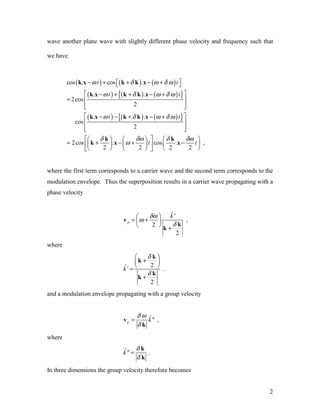Group velocity and phase velocity are different velocities that describe wave propagation. Phase velocity defines the velocity at which the phase of a wave propagates in space. Group velocity describes how a modulation or "group" of waves propagates. It can be shown that for a lossless medium, the group velocity equals the energy velocity, which is normal to the slowness surface. The relations between group velocity, phase velocity, and the slowness surface are illustrated using diagrams.




